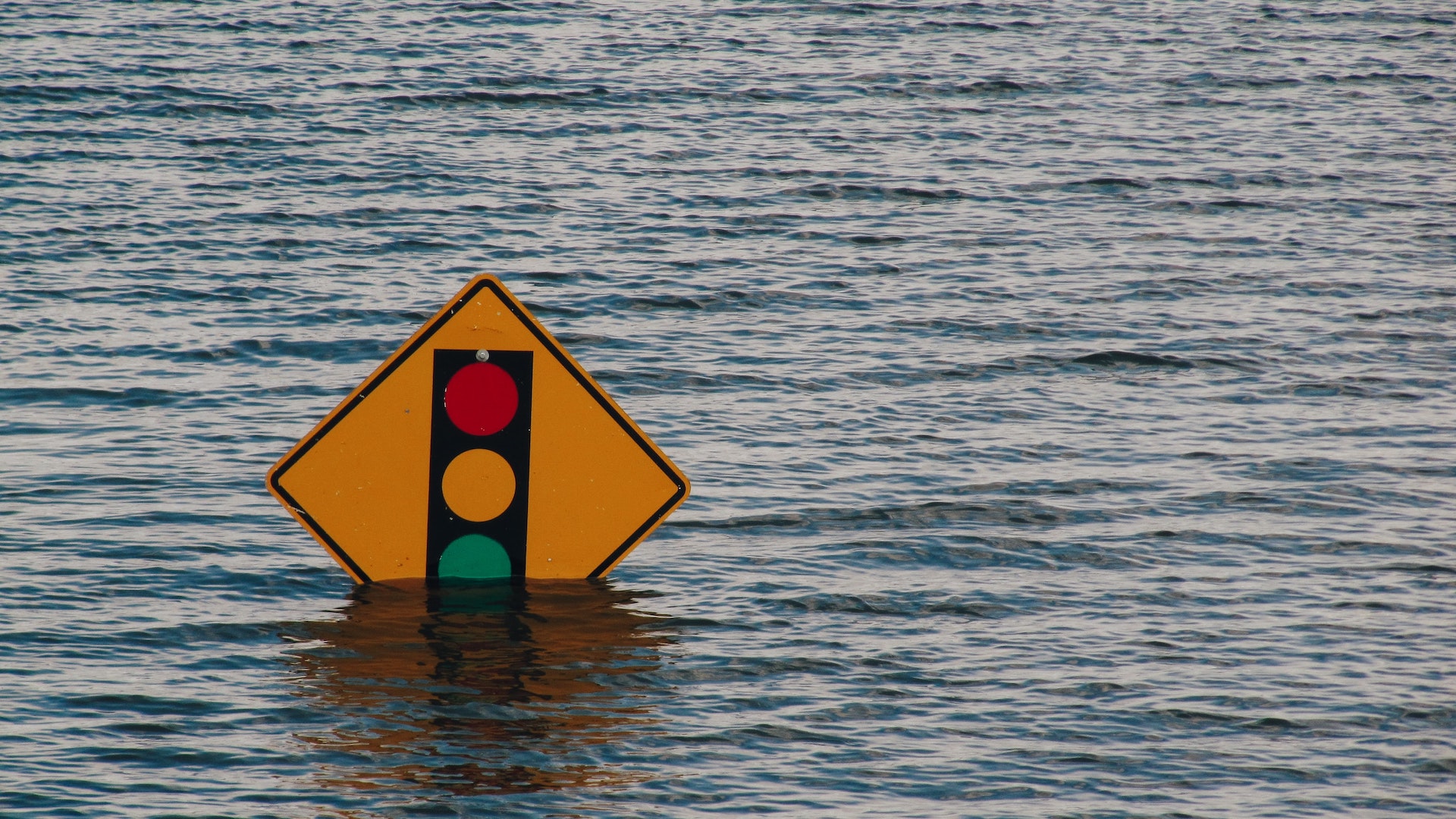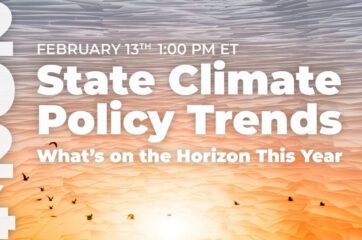The impacts of the climate crisis are most dramatically felt through changes in water – changes that severely affect humans, societies, and the environment. The climate crisis is fundamentally altering our water cycles, increasing the frequency of storms and floods. Extreme weather events disproportionately affect communities of color and low-income neighborhoods, exacerbating existing racial and social inequalities. If we’re going to ensure that everyone has a safe and equitable future, protected and well equipped to face the impacts of natural disasters, we need to better protect and prepare vulnerable populations.
Climate impacts on the water cycle
The climate crisis changes the amount, distribution, timing, and quality of available water in different parts of the world. Water and weather share an inextricable relationship – a delicate balance between evaporation and precipitation. It’s also the first and foremost cycle through which climate change is currently felt on the ground.
The water cycle describes the existence and movement of water on, in, and around the Earth.The planet’s water is always in movement and is always changing states, from liquid to vapor to ice and back again. Disruptions in this cycle due to climate change increase the frequency of floods, droughts, melting glaciers, and storms. Human activity such as the burning of fossil fuels increases Earth’s temperature. Rising temperatures result in an increase of evaporation, melting of ice or other processes of the water cycle that disrupt Earth’s climate. Climate change also reinforces feedback loops. As the climate warms, ocean temperatures increase and melt glacial ice, contributing to rising sea levels, which in turn increases the frequency and severity of storms and floods.
“It’s a vicious cycle – climate change causing a cascade of effects that result in even more climate change. A problem we created taking on a life of its own…to potentially devastating effect,” the Climate Reality Project reports.
A worsening issue
Water-related natural disasters are only getting worse – hurricanes in particular are becoming increasingly more dangerous due to the climate crisis. As water temperatures warm and more heat energy is available, the potential for tropical cyclones to develop rises. Floods are also expected to increase in severity, as global warming continues to exacerbate sea level rise, extreme weather, and precipitation – our nation’s floodplains are expected to grow by approximately 45 percent by the end of the century.
A recent New York Times article revealed that nearly twice as many properties may be susceptible to flood damage than previously thought, according to a new effort to map the danger. The new calculation estimates that 14.6 million properties are at risk from what experts call a 100-year flood, far more than the 8.7 million properties shown on federal government flood maps. A 100-year flood is one with a one percent chance of striking in any given year.
Climate Ready Boston estimates that by the end of the century, Massachusetts could experience up to 10 feet of sea level rise and the area of land exposed to stormwater flooding is also projected to grow throughout the century. As soon as the 2050s, seven percent of the total land area in the city could be exposed to frequent stormwater flooding from 10-year, 24-hour rain events.
Flood risks and its ties to social inequality
Floods are among the most destructive disasters fueled by climate change, and they have impacted nearly every state and county, leading to the loss of human life and the destruction of ecosystems and properties.
But catastrophes do not affect everyone equally. The price of property across the world is often lower in low-lying neighborhoods that flood regularly. Crucial flood-control infrastructure, such as storm drains, culverts and levees, are often poorly maintained or not present in lower socioeconomic areas. In addition, each successive flood tends to result in a greater concentration of poverty.
Thus the impacts of floods hit communities of color and those underserved by public infrastructure and investment hardest – an E&E News analysis of federal flood insurance payments shows that flooding in the U.S. disportionately harms Black neighborhoods.
Neighborhoods without green space to absorb water are particularly vulnerable to flooding. Due to decades of racist redlining policies and discriminatory housing practices, these neighborhoods tend to be predominantly communities of color. According to the Guardian, predominantly white neighbourhoods have 11 times more green space than those where 40% of residents are Black or of a different ethnicity, new research from a government agency shows. “If you live in an affluent suburb you are also likely to have an above average quantity of good parks near you. On the other hand, if you live in a deprived inner city ward with high density housing you might have many small, poor quality green spaces but you are unlikely to have access to large green spaces or good quality green space,” said the report’s authors.
This lack of green space in communities of color relates to how they were planned in the first place. As Climate XChange’s Carlie Clarq writes in her piece, How systemic racism determines health outcomes for Black Americans, racism was codified in exclusionary zoning practices, which inadvertently prohibited people of color from living in certain districts or areas. Upheld by Supreme Court case Euclid v. Ambler in 1926, exclusionary zoning laws are still standard practice today, and still exist in most American neighborhoods. “The result — industries that offer wealthy jobs and clean services develop in White, residential neighborhoods, while dirty, polluting industries develop in Black, commercial communities,” Clarq writes.
Natural disasters involving flooding tend to damage minority populations most – in 2005, when Hurricane Katrina devastated southeast Louisiana, the damage was the most extensive in African American neighborhoods.
While the white neighborhoods of New Orleans—such as the French Quarter, the Superdome, the Warehouse District, and the Garden District—have mostly recovered from Katrina, its Black neighorboods still have not. As writer Gary Rivlin put it: “Katrina was not an equal opportunity storm. A black homeowner in New Orleans was more than three times as likely to have been flooded as a white homeowner. That wasn’t due to bad luck; because of racially discriminatory housing practices, the high-ground was taken by the time banks started loaning money to African Americans who wanted to buy a home.”
Since Katrina, the Black population of the city has plummeted, and income gaps between Black people and white people have widened. Many African-American neighborhoods and the businesses supporting them have not fully recovered.
Socioeconomic status also affects a community’s preparedness for natural disasters. “Individuals who work long hours may be unable to attend community preparedness meetings, and may have less access to warnings and evacuation instructions. This combination of concentrated poverty and insufficient preparation can have deadly consequences,” the EDC reports.
Although severe storms impact anyone regardless of socioeconomic stature, “the capacity to respond to and recover from flooding is much lower in socially vulnerable populations that even in the best of times are struggling to function,” a report published in March 2019 by the National Academies of Sciences, Engineering and Medicine writes.
Long and short term solutions
Centuries of racial, ethnic, and class segregation and marginalization have fostered a society where the most vulnerable communities bear the brunt of flood and hurricane damage.
To address this issue in the short term, we must implement effective planning to mitigate the effects of future disasters. According to our Businesses Acting on Rising Seas 2018 report, cities and towns can take advantage of zoning bylaws by installing stricter regulations than those imposed by state legislation. Creating more stringent building safety and environmental quality standards for areas that are high risk, along with providing incentives, can encourage building on better-suited locations. In the long term, we must address the racial and class inequalities that pervade this country on all levels: personally, locally, and nationally.









